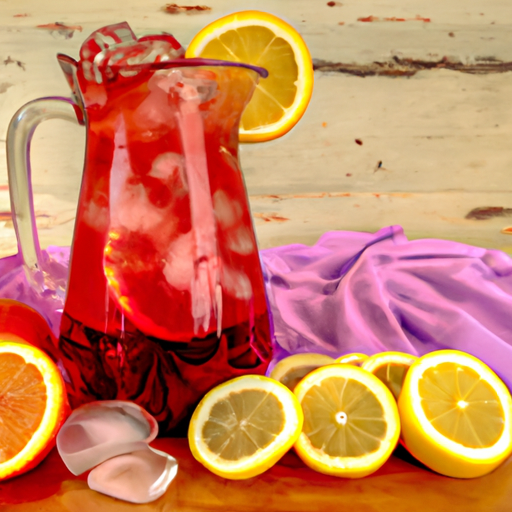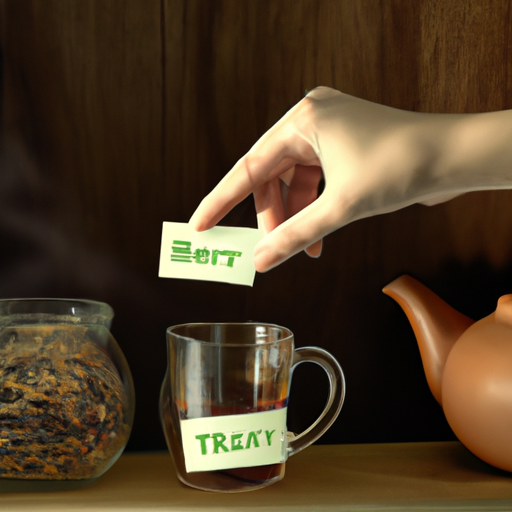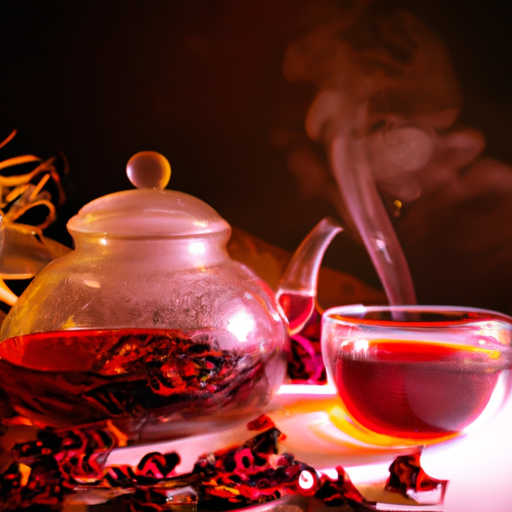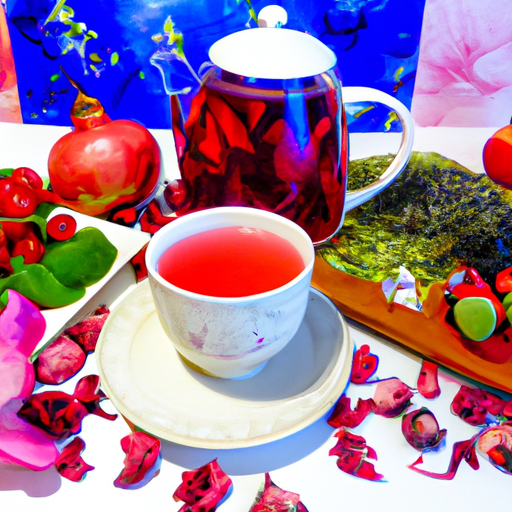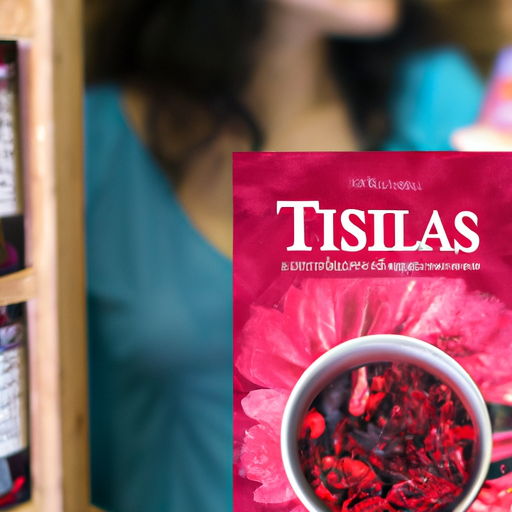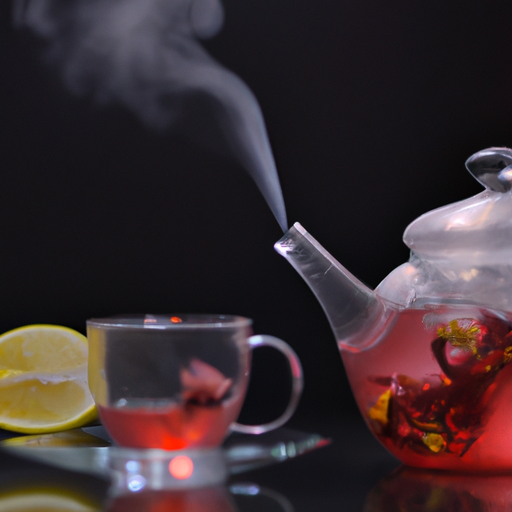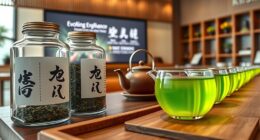I genuinely adore iced hibiscus tea, particularly in the warm summer season. It’s invigorating, full of taste, and comes with numerous health advantages.
If you’re like me and want to learn how to make this delicious beverage at home, you’ve come to the right place!
Making iced hibiscus tea is surprisingly easy and requires only a few simple ingredients. All you need is dried hibiscus flowers, water, sweetener of your choice (optional), and some ice cubes.
Whether you’re hosting a party or just looking for a refreshing drink to cool down on a sunny day, learning how to make iced hibiscus tea will definitely come in handy!
So let’s get started!
Key Takeaways
- Making iced hibiscus tea is easy and requires dried hibiscus flowers, water, sweetener, and ice cubes.
- Optional additions such as mint leaves or lemon juice can be added for extra flavor, and fruits, herbs, and spices can be used for depth and complexity of flavor.
- Hibiscus tea offers numerous health benefits, including weight loss and lower blood sugar levels, but it is recommended not to consume more than 3-4 cups per day to avoid dehydration and potential drug interactions with certain medications.
- Proper storage and serving temperature are key to keeping iced hibiscus tea fresh and delicious.
Gather the Ingredients
To make iced hibiscus tea, I’ll need a few key ingredients. First and foremost, I’ll need hibiscus flowers, which are the star of the show.
In addition to this, I’ll need water and a sweetener such as honey or sugar. While these are the required ingredients, there are also some optional additions that can be added for extra flavor, such as mint leaves or lemon juice.
Required Ingredients
You’ll need some hibiscus flowers, sugar, water, and ice to make a refreshing iced hibiscus tea. Here are the required ingredients you’ll need:
- Dried hibiscus flowers: Look for them at your local grocery store or online.
- Granulated sugar: Adjust the amount of sugar according to your preference.
- Water: Use filtered water for best results.
- Ice: You can use regular ice cubes or try freezing some brewed tea in an ice cube tray for added flavor.
- Pitcher: A large pitcher will be needed to hold all of the ingredients.
When it comes to alternative ingredients and brewing techniques, there are plenty of options. Instead of granulated sugar, you could use honey or agave syrup as a natural sweetener. If you don’t have access to dried hibiscus flowers, try using hibiscus tea bags instead. For brewing techniques, you can steep the flowers in hot water for a stronger flavor or cold brew them overnight in the refrigerator for a milder taste.
Now that we have our required ingredients ready, let’s talk about optional additions that can elevate your iced hibiscus tea even more.
Optional Ingredients
If you’re feeling adventurous, consider adding a splash of citrus or a sprig of mint to your refreshing hibiscus beverage. Adding sweetness can be done with honey or agave nectar, but be careful not to overpower the natural tartness of the hibiscus. You can also customize flavors by adding other fruits like strawberries or pineapple for a fruity twist.
Keep in mind that these are optional additions and it’s perfectly fine to enjoy hibiscus tea just as it is. However, if you want to experiment with different flavor combinations, don’t be afraid to mix things up!
Now that we’ve talked about optional ingredients, let’s move on to preparing the tea itself.
Preparing the Tea
First, steep the hibiscus tea bags in boiling water for at least five minutes to ensure a strong and flavorful base. The longer you steep the tea bags, the stronger and more concentrated the flavor becomes. However, be careful not to over-steep as it can result in a bitter taste.
It’s also important to note that brewing temperature affects the taste of your tea, so make sure your water is hot enough but not boiling.
Once you’ve finished steeping your tea bags, remove them from the pot and let the tea cool down before adding ice cubes. You can speed up this process by placing your pot in an ice bath or transferring it to a pitcher and refrigerating it until cold.
Since hibiscus tea is naturally tart, you may want to add sweeteners such as honey or sugar at this point. Alternatively, you can add sliced fruits such as oranges or lemons for natural sweetness.
Pour your cooled hibiscus tea into glasses filled with ice cubes and garnish with fresh herbs or fruits if desired. If you prefer stronger flavors or sweeter tastes, feel free to adjust the amount of ingredients accordingly.
Sweetening your iced hibiscus tea can enhance its taste while balancing out its acidity levels making it more refreshing on a hot summer day!
Sweetening Your Tea
To enhance the taste of your refreshing summer drink, consider adding honey or sugar as sweeteners. Did you know that consuming honey may lead to a decrease in body weight and lower blood sugar levels? If you’re looking for sugar alternatives, try using stevia or agave nectar instead.
When sweetening your tea, it’s important to adjust the sweetness to your liking. Start by adding a small amount of honey or sugar, then taste and add more as needed. Keep in mind that hibiscus tea has a naturally tart flavor, so you may need more sweetener than usual. Don’t be afraid to experiment with different ratios until you find the perfect balance.
If you want to avoid added sugars altogether, try using fruit juice as a natural sweetener. Orange juice pairs particularly well with hibiscus tea and adds an extra burst of flavor. You can also try using other fruit juices like apple or pineapple for variety.
Now that we’ve covered how to sweeten your tea, let’s move on to adding flavor with herbs and spices.
Adding Flavor to Your Tea
When it comes to adding flavor to my tea, I love experimenting with fruits and herbs. Whether it’s a slice of lemon or a sprig of mint, these natural ingredients can add a refreshing twist to any cup of tea.
Additionally, spices like cinnamon and ginger can also add depth and warmth to the flavor profile. Overall, incorporating different flavors into my tea allows me to customize my drink according to my mood and preferences.
Fruits and Herbs
Adding some fresh berries or mint leaves to your iced hibiscus tea will give it a burst of fruity and refreshing flavor.
When it comes to pairing options, there are many different flavor combinations you can experiment with. For example, strawberries or raspberries pair well with the tartness of the hibiscus tea, while blueberries add a subtle sweetness. Mint leaves provide a cooling sensation and complement the floral notes of the hibiscus.
If you’re feeling adventurous, try adding some herbs like basil or thyme for an unexpected twist on your iced tea. These herbs may seem unconventional for a beverage but they can work wonders in terms of enhancing flavors.
Incorporating fruits and herbs into your iced hibiscus tea is an easy way to elevate its taste and make it more exciting.
In the next section, we’ll explore how spices can also add depth and complexity to your cup of tea.
Spices
Spices can transform the flavor profile of your hibiscus tea, taking it from a simple beverage to a complex and aromatic experience. Adding spices not only enhances the taste but also provides numerous health benefits. Here are some reasons why you should consider incorporating spices in your hibiscus tea:
- Cinnamon: adds warmth and sweetness while regulating blood sugar levels
- Ginger: provides a zesty kick and aids digestion
- Cardamom: imparts an exotic floral flavor and helps detoxify the body
- Cloves: infuses a spicy aroma and has anti-inflammatory properties
Using these spices in your hibiscus tea not only creates a unique taste but also offers additional health benefits that complement those of the hibiscus flower itself. With this knowledge, you can create blends that cater to your specific tastes and needs.
In creating hibiscus tea blends, it’s important to experiment with different combinations of flavors until you find one that suits your palate. Adding fruits, herbs, or even more spices can elevate the taste profile and provide additional nutritional value.
Creating Hibiscus Tea Blends
I love experimenting with different tea blends, and hibiscus is one of my favorite ingredients to use. Combining hibiscus with other teas can create unique flavor profiles that are both delicious and refreshing.
Mixing hibiscus with fruits and spices adds an extra layer of complexity to the tea, making it a versatile ingredient for any tea aficionado looking to create their own signature blend.
Combining Hibiscus with Other Teas
By blending hibiscus with black tea, you can create a delicious and refreshing iced tea perfect for a hot summer day. Hibiscus is known for its tangy and floral flavor while black tea adds depth and richness to the brew.
When choosing the right black tea to pair with hibiscus, it’s important to consider the strength of both teas. A strong black tea like Assam or Ceylon works well as it can stand up to the boldness of hibiscus.
Tea pairing is all about experimenting with different flavor combinations until you find your perfect match. Mixing hibiscus with other teas not only enhances its taste but also creates a unique blend that’s perfect for any occasion.
Now let’s move on to mixing hibiscus with fruits and spices for an even more exciting twist on this classic beverage.
Mixing Hibiscus with Fruits and Spices
In the previous section, I discussed how you can combine hibiscus with other teas to create unique flavor profiles. Now, let’s take it a step further and add some fruits and spices to make your tea even more exciting!
Hibiscus is a versatile ingredient that pairs well with many flavors, making it perfect for creating fun and flavorful beverages. You can easily turn your hibiscus tea into a refreshing cocktail by adding some vodka or gin along with fresh fruit juices like pineapple or orange. Or why not try incorporating spices like cinnamon or ginger for an extra kick? The possibilities are endless when it comes to mixing hibiscus with fruits and spices. Plus, these Hibiscus cocktail recipes make great additions to any summer party or gathering. Keep reading for some Hibiscus tea party ideas!
| Fruit | Spice | Tea Pairing | Flavor Profile |
|---|---|---|---|
| Pineapple | Cinnamon | Hibiscus Ginger tea + Pineapple juice | Sweet & Spicy |
| Mango | Cardamom | Hibiscus Rosehip tea + Mango puree | Floral & Fruity |
| Strawberry | Basil | Hibiscus Lemonade tea + Fresh Strawberries | Tart & Herbaceous |
| Orange | Clove | Hibiscus Jasmine green tea + Orange juice | Citrusy & Aromatic |
Now that we’ve explored the different ways of mixing hibiscus with fruits and spices, let’s move on to serving and storing your delicious creation without losing its freshness.
Serving and Storing Your Tea
To ensure your iced hibiscus tea stays fresh, proper storage is key. Once you’ve brewed your tea and let it cool to room temperature, transfer it into a glass jar or pitcher with a tight-fitting lid. Then, store it in the refrigerator until ready to serve. This will keep the tea from spoiling and help maintain its flavor for several days.
When you’re ready to enjoy your iced hibiscus tea, be sure to serve it over ice. The ideal serving temperature is around 40-50°F (4-10°C), which will give the tea a refreshing chill without diluting its flavor too much. You can also add some sliced fruit or herbs as garnish if desired. Lemon wedges or mint leaves can enhance the overall taste experience.
Now that you know how to properly store and serve your iced hibiscus tea, you can reap all of its health benefits! Hibiscus tea has been shown to lower blood pressure, reduce inflammation, and improve heart health among other things. So sit back and sip on this delicious beverage while knowing that it’s doing wonders for your body.
Health Benefits of Hibiscus Tea
You’ll be amazed at how hibiscus tea can work wonders for your body, just like a magic potion. This refreshing drink has a high nutritional content that’s loaded with health benefits. Here are three reasons why you should consider adding hibiscus tea to your diet:
-
Rich in antioxidants: Hibiscus tea is packed with antioxidants that help fight free radicals and reduce oxidative stress in the body. These compounds have been shown to lower the risk of chronic diseases such as cancer, heart disease, and diabetes.
-
Lowers blood pressure: Research studies have found that drinking hibiscus tea can help lower blood pressure levels in people with hypertension. The tea contains compounds called anthocyanins which relax blood vessels and improve circulation, leading to reduced blood pressure.
-
Boosts immunity: Hibiscus tea is also rich in vitamin C, which plays a vital role in boosting the immune system and fighting off infections. Drinking this tea regularly may help prevent colds, flu, and other respiratory illnesses.
While hibiscus tea has many health benefits, it’s important to note that it may not be suitable for everyone. In the next section, we’ll discuss some potential side effects and precautions you should take before consuming this beverage regularly.
Side Effects and Precautions
Before diving into the health benefits of hibiscus tea, it’s important to be aware of some potential side effects and precautions that you should take into consideration. While hibiscus tea is generally safe for most people, drinking too much of it may cause some unwanted effects. For instance, hibiscus tea can have a diuretic effect on the body, which means it may increase urination and lead to dehydration.
To prevent dehydration when drinking hibiscus tea, make sure you drink plenty of water throughout the day. It’s also recommended that you do not consume more than 3-4 cups of hibiscus tea per day. Additionally, if you are taking any medication or have any medical conditions, it’s important to talk with your doctor before adding hibiscus tea to your diet as there are potential drug interactions.
Some medications that may interact with hibiscus tea include hydrochlorothiazide (a diuretic), aspirin (an anti-inflammatory), and acetaminophen (a pain reliever). If you’re taking any medications regularly or have a medical condition such as high blood pressure or diabetes, consult with your healthcare provider before consuming this beverage. Overall, while there are some precautions associated with drinking hibiscus tea, its numerous health benefits make it a great addition to any healthy lifestyle.
Frequently Asked Questions
Can hibiscus tea be made with dried or fresh hibiscus flowers?
So you’re wondering if hibiscus tea can be made with dried or fresh flowers? Let me tell you, I was skeptical at first too.
But after some research and testing, I can confidently say that both options work just fine. However, the taste does differ slightly depending on whether you use dried or fresh flowers.
Dried flowers tend to have a more concentrated flavor and can result in a stronger brew, while fresh flowers produce a lighter and more delicate flavor. Ultimately, it comes down to personal preference.
Some people prefer the boldness of dried hibiscus tea while others enjoy the subtleness of fresh. So go ahead and try both varieties to see which one suits your taste buds best!
How long does it take to steep hibiscus tea?
Steeping time for hibiscus tea can vary depending on personal preference and the desired strength of the flavor. Generally, steeping for 5-7 minutes in boiling water is recommended. However, some people prefer a stronger flavor and may steep for up to 10 minutes.
On the other hand, those who prefer a milder taste may only steep for 3-4 minutes. It’s important to note that longer steep times can result in a more tart and sour flavor while shorter times may produce a sweeter taste.
Additionally, adding sweeteners like honey or sugar can also affect the final flavor of the tea.
Can hibiscus tea be made with other herbs or fruits?
When it comes to making hibiscus tea, the possibilities for herbal combinations and fruit infusions are endless. While hibiscus is a flavorful and versatile ingredient on its own, adding in other herbs or fruits can enhance the taste and health benefits of your drink.
Some popular herbal combinations include mint, ginger, or lavender, while fruit infusions like lemon or raspberry add a refreshing twist. The key is to experiment with different flavors until you find the perfect combination that suits your taste buds.
Whether you’re looking for a soothing bedtime blend or a revitalizing morning pick-me-up, there’s no limit to the delicious variations of hibiscus tea that you can create with just a few additional ingredients.
What is the best way to store leftover hibiscus tea?
After conducting some research, I’ve found that the best way to store leftover hibiscus tea is in an airtight container in the refrigerator. This will help preserve its freshness and flavor for up to 3-4 days.
It’s important to note that hibiscus tea has a shorter shelf life compared to other teas due to its natural acidity. To extend its shelf life, you can add a bit of lemon juice or honey as natural preservatives before storing it in the fridge.
Additionally, avoid leaving the tea at room temperature for too long as this can cause bacteria growth and spoilage. By following these storing techniques, you can enjoy your leftover hibiscus tea without compromising on taste or quality.
Can hibiscus tea be consumed hot instead of iced?
Yes, hibiscus tea can definitely be consumed hot instead of iced. In fact, it’s a popular beverage in many cultures and often enjoyed as a warm drink. It has a delicious tart flavor and numerous health benefits.
Hibiscus tea is known to lower blood pressure, reduce inflammation, and improve digestion. It’s also rich in antioxidants, which help to protect the body from damage caused by free radicals.
So whether you prefer your hibiscus tea hot or cold, you can enjoy all of its amazing health benefits while savoring its unique taste.
Conclusion
Well folks, that’s all there is to it! You now have the tools and knowledge to make a delicious batch of iced hibiscus tea.
And let me tell you, nothing says summer like a refreshing glass of this tart and tangy beverage. But wait, there’s more!
Not only does hibiscus tea taste great, but it also has numerous health benefits. From lowering blood pressure to fighting inflammation, this little flower packs a big punch.
So not only will you be quenching your thirst with a tasty drink, but you’ll also be doing your body some good. Just remember to enjoy in moderation and be aware of any potential side effects or interactions with medications.
Now go forth and impress your friends with your new-found tea-making skills (and maybe even start up your own hipster tea stand). Cheers!

